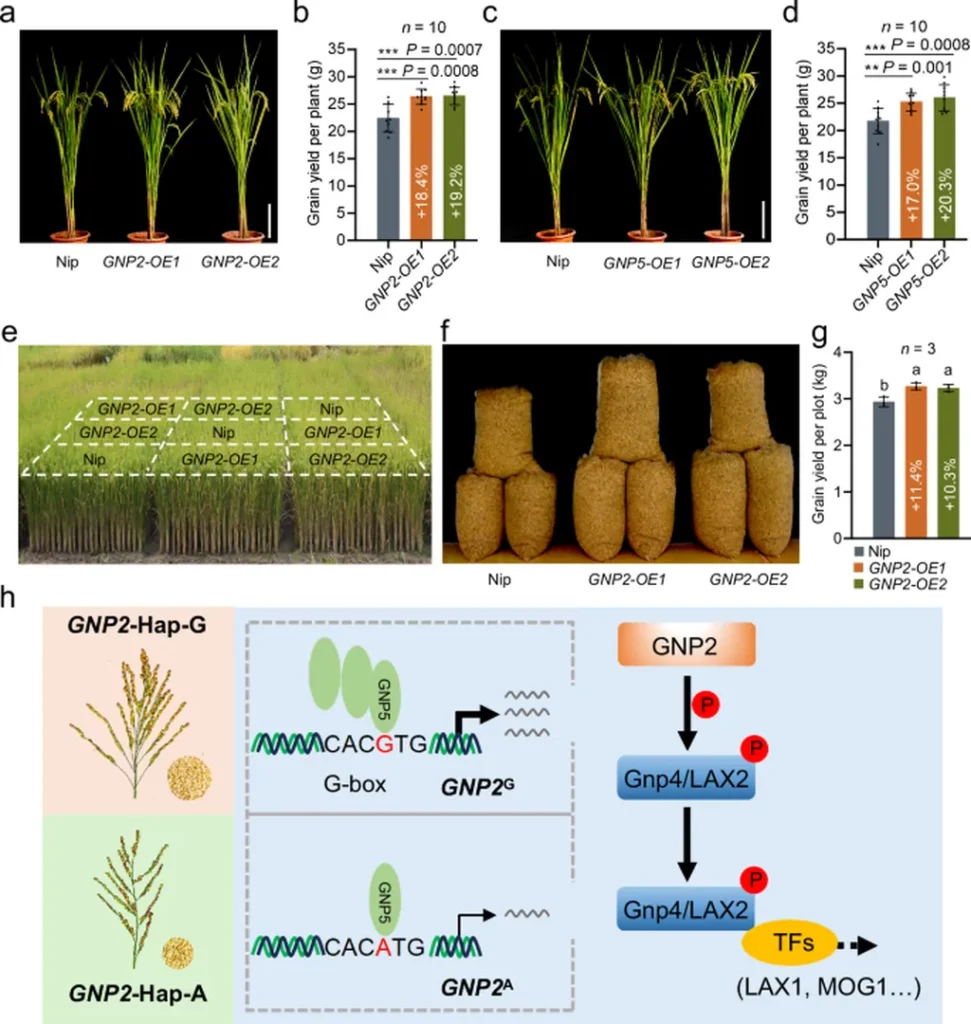In the heart of China, a team of researchers led by Qianfeng Hu at the China Agricultural University has unlocked a genetic secret that could bolster rice yields and reshape the future of agriculture. Their study, published in *Nature Communications* (which translates to “Nature Communications” in English), identifies two key genes, GNP2 and GNP5, that regulate the number of grains per rice panicle, ultimately enhancing rice yield.
The team’s genome-wide association study (GWAS) revealed that natural variations in these genes significantly influence grain number per panicle (GNP). GNP5 encodes a bZIP transcription factor that binds to a specific locus in the GNP2 promoter, while GNP2 encodes a conserved GSK3-like kinase that phosphorylates and stabilizes Gnp4/LAX2. This phosphorylated Gnp4/LAX2 promotes yield by modulating transcription factors involved in panicle development.
Hu and his team discovered an elite allele combination (Type I) of GNP5 and GNP2 that significantly increases GNP. Field trials demonstrated that enhanced GNP2 expression raises yield by approximately 10%. “This finding provides a valuable genetic resource for improving rice yield,” said Hu. “It’s a significant step forward in our quest to enhance food security and sustainability.”
The implications of this research extend beyond rice fields. As the global population grows, so does the demand for food. This study offers a promising avenue for increasing crop yields without expanding farmland, a critical consideration for sustainable agriculture. Moreover, the techniques used in this study could be applied to other crops, potentially revolutionizing the agricultural sector.
The commercial impacts of this research are substantial. Farmers could benefit from higher yields, leading to increased profits and food security. The energy sector could also see indirect benefits, as more efficient agriculture reduces the need for energy-intensive farming practices. Additionally, the insights gained from this study could drive the development of new agricultural technologies and tools.
As we look to the future, this research shapes a promising path for agricultural innovation. “Our findings open up new possibilities for crop improvement,” said Hu. “We are excited to see how this research will be applied and built upon in the years to come.”
In the ever-evolving landscape of agriculture, this study stands as a testament to the power of genetic research. It’s a reminder that the solutions to some of our most pressing challenges may lie within the very DNA of the crops we rely on. As we continue to unravel the genetic mysteries of our food crops, we edge closer to a future of sustainable, abundant food for all.

